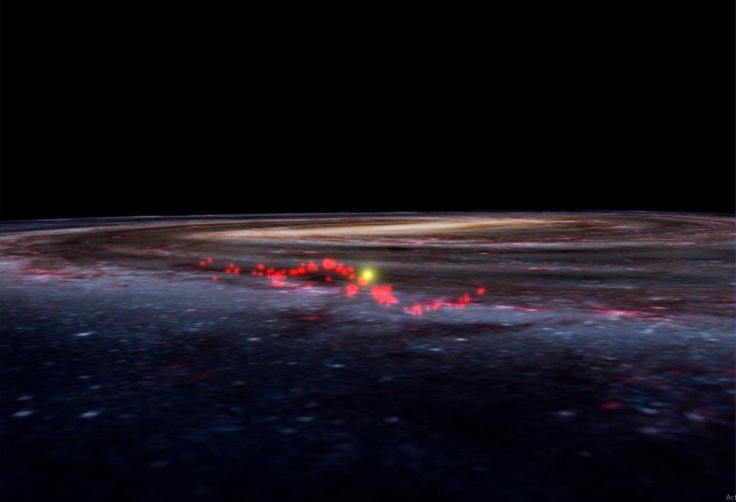Astronomers at Harvard University have discovered a wave-shaped gaseous structure made up of interconnected stellar nurseries in our Milky Way, which is the largest ever seen aptly named "Radcliffe wave" after their institute, the Radcliffe Institute for Advanced Study.
The discovery changes a 150-year-old vision of nearby stellar nurseries as an expanding ring into one featuring an undulating, star-forming filament that reaches trillions of miles above and below the galactic disk. The work, published in Nature, analyzed data from the European Space Agency's Gaia spacecraft, launched in 2013 to measure the position, distance, and motion of the stars.
The team combined the data to construct a 3D map of interstellar matter but noticed an unexpected pattern in the spiral arm closest to the Earth. It was a long, thin structure, about 9,000 light years long and 400 light years wide, with a wave-like shape, cresting 500 light years above and below the mid-plane of our Galaxy's disk with numerous interstellar stellar nurseries that were previously thought to form part of "Gould's Belt", a band of star-forming regions believed to be oriented around the Sun in a ring.

Living next to a giant
"No astronomer expected that we live next to a giant, wave-like collection of gas - or that it forms the Local Arm of the Milky Way," said Alyssa Goodman, Professor of Applied Astronomy at Harvard University and co-director of the Science Program at the Radcliffe Institute. Gould and Herschel are two known bright stars observed in an arc on the sky for a long time but now the astronomers found a large coherent gas structure, organized not in a ring but in an undulating filament form.
Sun at 500 light years
The Sun lies only 500 light years from the Wave at its closest point. "It's been right in front of our eyes all the time, but we couldn't see it until now," said João Alves, professor of stellar astrophysics at the University of Vienna and Radcliffe Fellow. The new, 3D map shows our galactic neighborhood in a new light, giving researchers a revised view of the Milky Way and opening the door to other major discoveries.
Astronomers are not sure what causes this shape but it could be like a ripple in a pond, as if something extraordinarily massive landed in our galaxy, said Alves. "What we do know is that our Sun interacts with this structure. It passed by a festival of supernovae as it crossed Orion 13 million years ago, and in another 13 million years it will cross the structure again, sort of like we are 'surfing the wave'," she said.









